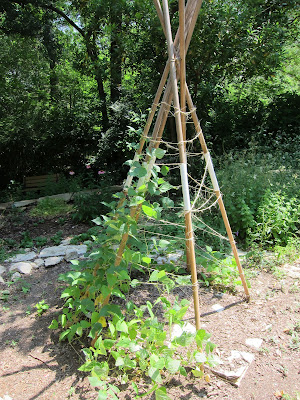Faithful blog followers may remember that we've had an ongoing service-learning partnership with Tarrant County College--Trinity River Campus for a few years now. Every year, dedicated students come tour the Village, help us preserve the cabins by raking leaves, and research and write blog entries for us.
We will publish these entries here for you to enjoy over the next few weeks. Thank you so much, Professor Blank and students!!!!
Andrea
Winburn
History
1301
Lisa Blank
Lessons from the
Native Americans
Life as a pioneer, most definitely contained
struggle and hardship. Plenty of new
experiences took place in these pioneers lives. They were traveling through
landscapes that were foreign to them and encountered Native Americans, who were
also foreign to them. Pioneers included
people from all walks of life, including women. Pioneer women have been
described to be, “weary,
overworked…taken from her happy home, and thrust onto the frontier with all of
its threats and dangers”(Williams). They have also been romanticized as a “strong, brave, moral woman
who headed West as a sort of civilizer and Christianizer of the frontier”(Williams).
Many women had to endure encounters with Native
Americans and were pressed with the duty of protecting their families and
defending their belongings. One account
of a conflict with Native Americans comes from Mrs. Samuel A. Maverick, “Two Indians rushed by me on Commerce Street
and another reached my door, and turned to push it just as I slammed it to and
beat down the heavy bar…One had stopped near Jinny Anderson, our cook, who
stood bravely in front of the children, mine and hers. She held a great stone
in her hands, lifting it above her head, and I heard her cry out to the
Indians: 'G'way from heah, or I'll mash
your head with this rock!'”(Looscan).
There was also quite a bit of fear amongst women as they encountered
Indians for the first time along the trail westward. “They were the first
Indians I had ever seen, and to my frightened vision, dressed in their long
mackinaw blankets with eagle feathers in their hair — my thought was that they
would kill us all, and take my baby in captivity” (Williams). One woman,
Catherine Haun, described her group as performing drills in order to prepare
for a possible Indian raid upon their camp.
However,
after repeated encounters with groups of Indians, the pioneers soon learned
that most Indians actually posed no threat to them. As the two groups became
accustomed to each other, they were able to interact in different ways, like
trading food and learning how to craft different items. Indians that were
encountered along the trail, also acted as guides for the pioneers. The
emigrant women took note of the differences between their culture and that of
the Indians. They noted the dress and
the jewelry of the Indians. “A piece of scarlet broadcloth edged with several
rows of white beads decorates the top of the moccasin and from either side of
this extends around the top of the quarters a little drop curtain effect
fringed by making fine cuts an inch deep around the edges”(Williams).
Overall,
pioneer women’s ideas and opinions about the Indian peoples changed. They were
first seen as worrisome and fear invoking, but soon many women learned that
some of the Indians they encountered were civil people and learned a great deal
from them.
Works Cited
Looscan, Adele.
"Texian Women by Adele Briscoe Looscan." Texas A&M University.
Sons of Dewitt Colony Texas, 1997. Web. 19 Mar. 2012.
Williams, Carol. "My First Indian: Interaction Between Women And
Indians On The Trail, 1845-1865." Overland Journal 4.3 (1986):
13-18. America: History and Life with Full Text. Web. 19 Mar. 2012.


